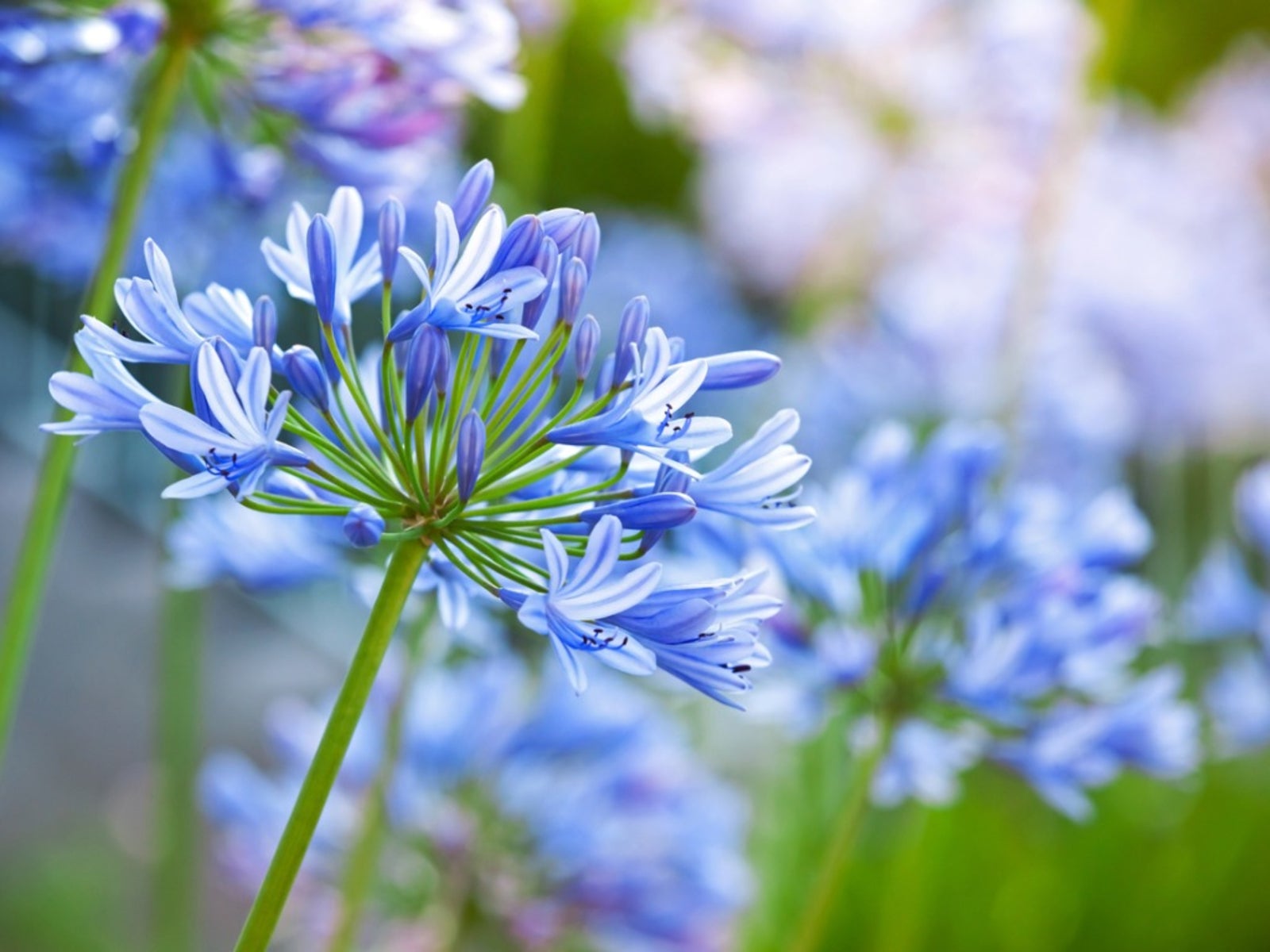How To Plant Agapanthus And Agapanthus Care

The Agapanthus, commonly referred to as the Lily-of-the-Nile or the African lily plant, is an herbaceous perennial from the Amaryllidaceae family that is hardy in USDA zones 7 to 11. This South African native beauty displays large masses of striking blue or white flowers atop a tall and slender stalk. Agapanthus plants reach up to 4 feet (1 m.) at maturity and bloom from June through August.
How to Plant Agapanthus
Agapanthus planting is best done during the fall or winter in warm climates. Agapanthus makes a lovely back border or focal plant due to its height, beautiful trumpet-shaped flowers, and leaf texture. For a dramatic effect, plant a large grouping throughout a sunny garden spot. Agapanthus flowers can also be used in container plantings in cooler regions. Growing Agapanthus requires a sunny to partly shady location and regular water. Mulching is helpful to retain moisture with new plants set about 1 to 2 inches (2.5-5 cm.) apart. While it is very tolerant to a wide variety of soil conditions, they do enjoy some rich compost or organic matter added during your agapanthus planting.
Agapanthus Care
Caring for an Agapanthus plant is easy in warmer regions. Once planted, this beautiful plant requires very little upkeep. To maintain health and performance, divide the plant once every three years. Be sure to get as much of the root as possible when dividing and only divide after the plant has bloomed. A potted Agapanthus does best when it is mildly root-bound. For those in cooler climates, potted Agapanthus plants must be brought indoors for the winter. Water the plant only once a month or so and place back outdoors after the threat of frost has passed. This easy to grow perennial is a favorite of both southern and northern gardeners alike who appreciate how easy it is to care for and admire the remarkable flower display. As an added bonus, Agapanthus flowers make an eye-catching addition to any cut flower arrangement and the seed heads can be dried for year-round enjoyment. Warning: Extreme caution should be taken when handling the Apaganthus plant, as it is poisonous if ingested and a skin irritant. Those with sensitive skin should wear gloves when handling the plant.
Sign up for the Gardening Know How newsletter today and receive a free copy of our e-book "How to Grow Delicious Tomatoes".